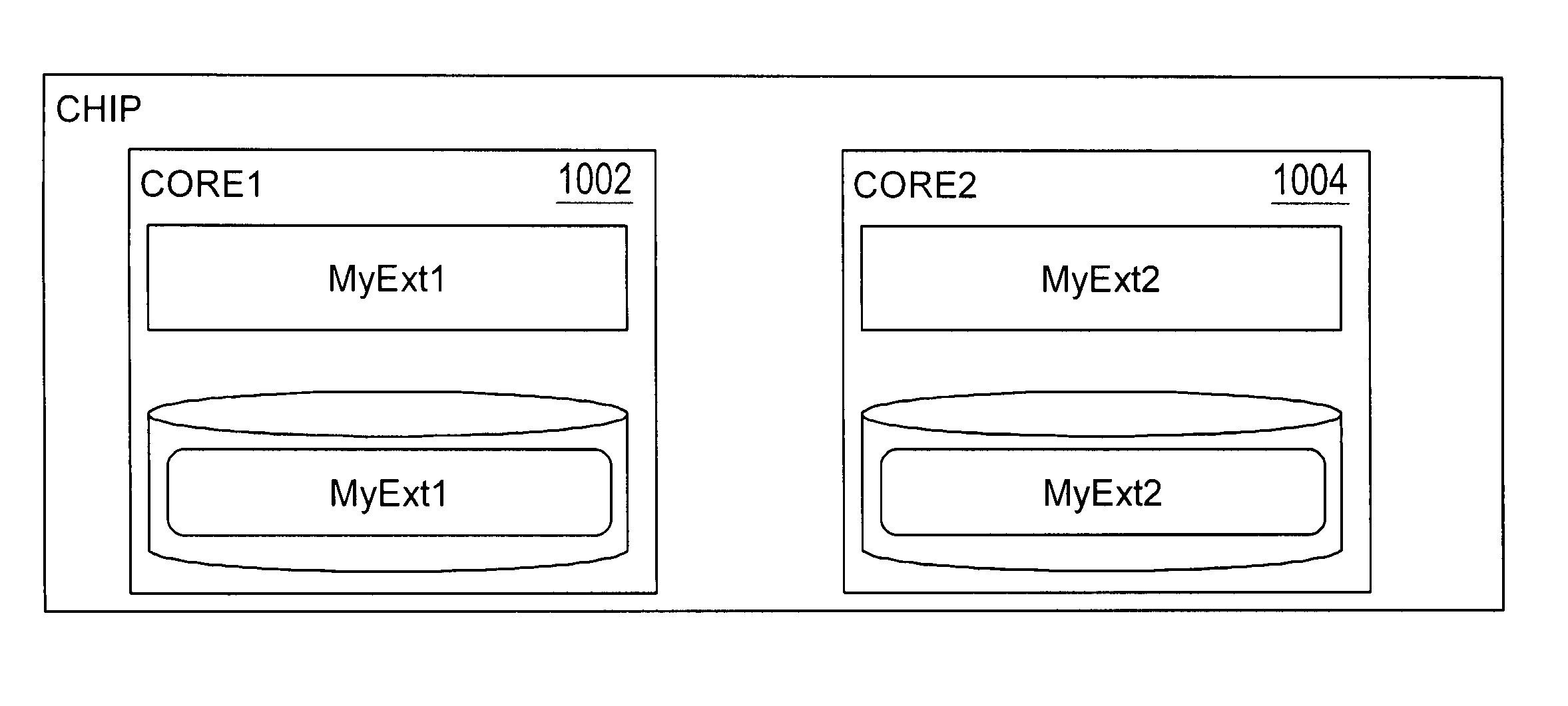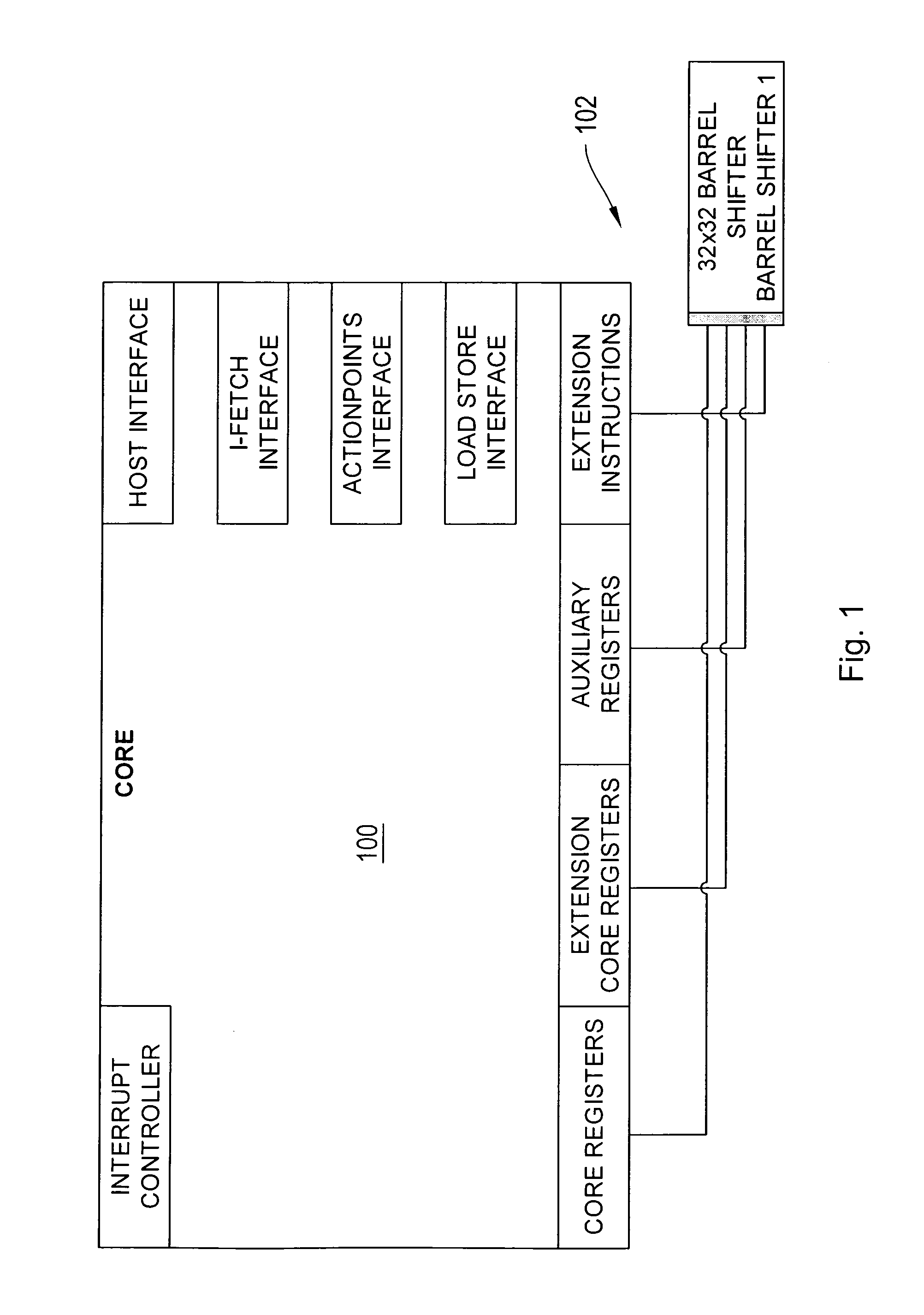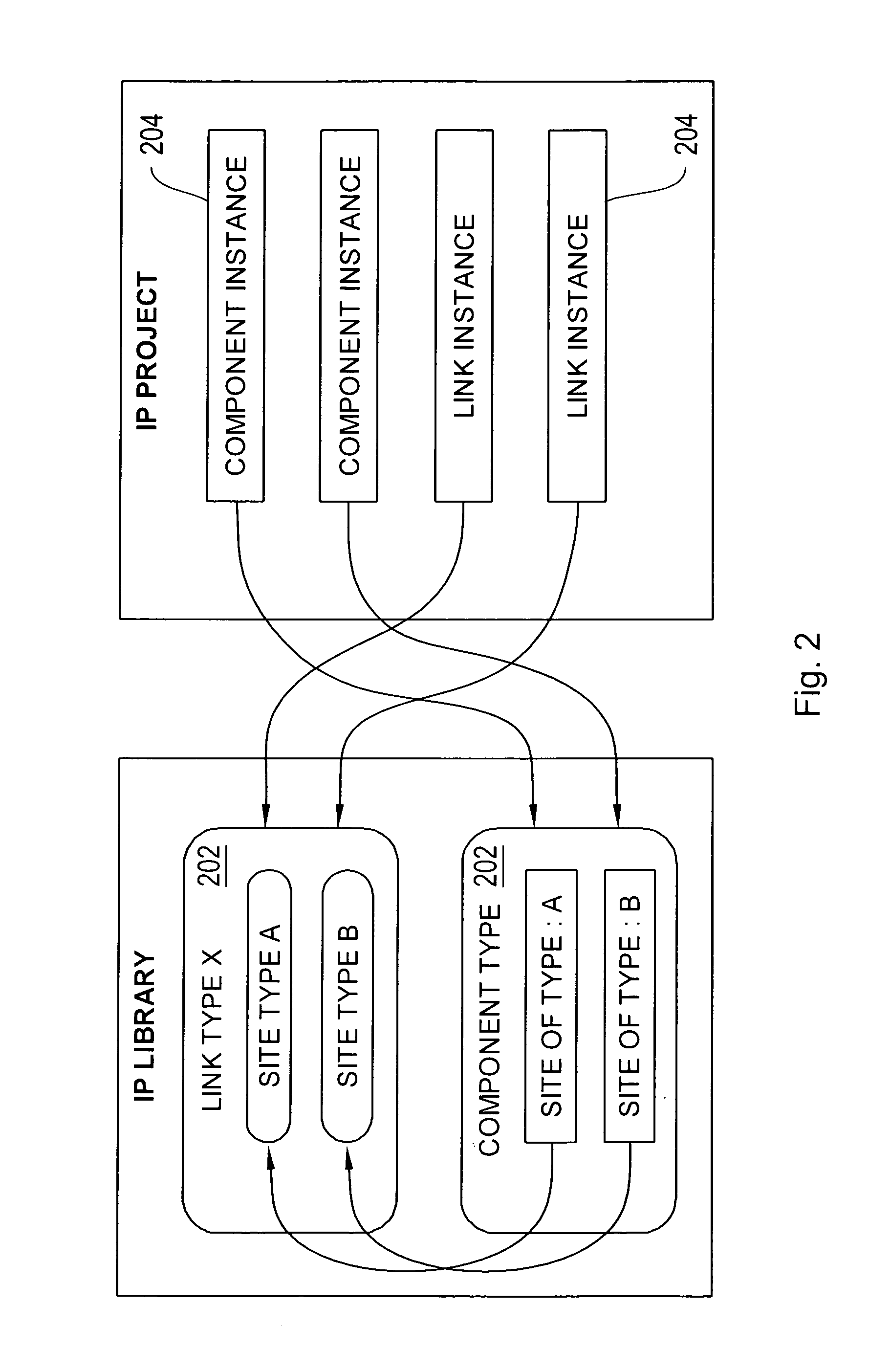Apparatus and method for managing integrated circuit designs
a technology of integrated circuits and software, applied in the field of integrated circuit design and computer-automated design of integrated circuits, can solve the problems of reducing the flexibility and capability afforded to the designer during and after the design process, compatibility issues or other problems, and the prior art approaches to automated ic design suffer several limitations, so as to facilitate user addition of “plug-ins, the effect of effective specifying the build hierarchy
- Summary
- Abstract
- Description
- Claims
- Application Information
AI Technical Summary
Benefits of technology
Problems solved by technology
Method used
Image
Examples
example 1
[0307]The following code shows how a cache component would find information relating to the core it is attached to:
[0308]
if (CoreSite.numLinks>0){ / / Check to make sure our bus width is >= to the core'sif (id.options.CacheAddressBusWidth >=CoreSite.[0].MemoryBusWidth)){return true;}return false;}
example 2
[0309]This next example illustrates how this approach can be used to define very complex relationships. In this example, the core component has a link site called ‘Signal’. All components that plug into this link site add a delay to the signal. The core must verify that the total delay of all components is less than 1.0. The delay would be a variable of the extension role of the signal link type.
[0310]The core component may also have a warning message to tell the user if the delay is over one. This warning has an associated piece of script that is evaluated to see if the warning is valid or not. The following is exemplary script:[0311] / / This will store the total delay.
[0312]
var Delay = 0.0; / / Get the number of links to the signal interfacevar numLinks = Signal.numLinks;for (Link=0;Link{ / / Add the delay of the extension to the total.Delay += Signal[Link].Delay);} / / If total delay is less than 1, then warning is not shown.if (Delay false;else / / Total delay must be >=1, so show warning...
example 3
[0313]In a prior example, where the user can choose the op-codes used by the various extension instructions, there would likely be a warning message if two extensions try to use the same op-code. This warning message can be implemented with a piece of script that is evaluated to see if the warning is valid or not. The script may be configured as in the following exemplar:
[0314]
/ / Allocate an array to hold the used code numbers.var Opcodes = new Array( ); / / Get the number of links to the instruction interfacevar numLinks = InstructionLinkSite.numLinks; / / Holds the result of this script.var result = false;for (Link=0;Link{var code = InstructionLinkSite.[Link].Code; / / See if the code is already used.if (Opcodes[code] == true){ / / Opcode is already used, so display warning.result = true;break;} / / Mark it as used in the array.Opcodes[code] = true;} / / Return the result.result;
This code allocates an array, and for each instruction extension connected to the core, it sets the array location ...
PUM
 Login to View More
Login to View More Abstract
Description
Claims
Application Information
 Login to View More
Login to View More - R&D
- Intellectual Property
- Life Sciences
- Materials
- Tech Scout
- Unparalleled Data Quality
- Higher Quality Content
- 60% Fewer Hallucinations
Browse by: Latest US Patents, China's latest patents, Technical Efficacy Thesaurus, Application Domain, Technology Topic, Popular Technical Reports.
© 2025 PatSnap. All rights reserved.Legal|Privacy policy|Modern Slavery Act Transparency Statement|Sitemap|About US| Contact US: help@patsnap.com



